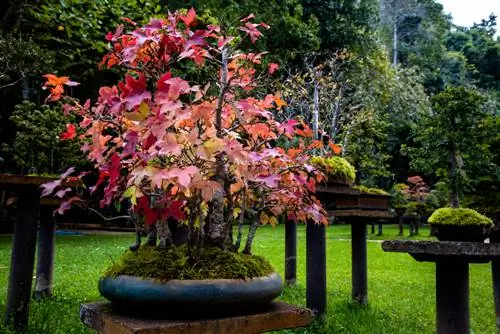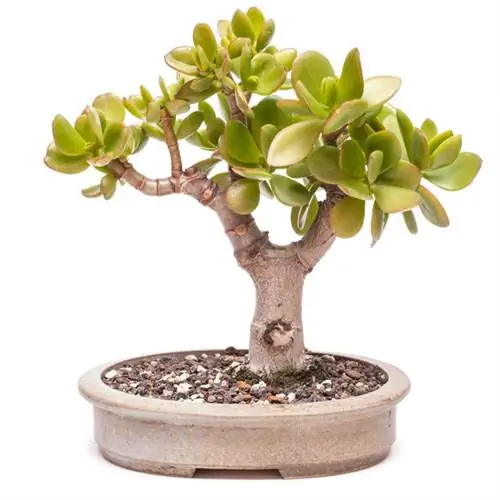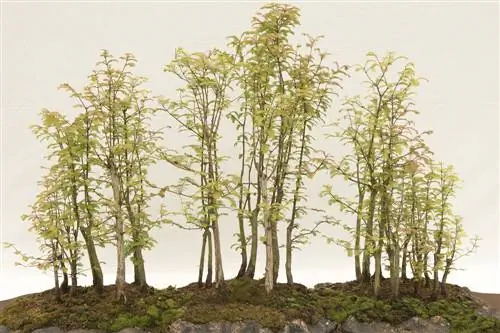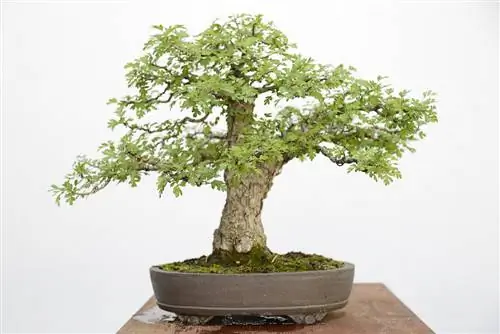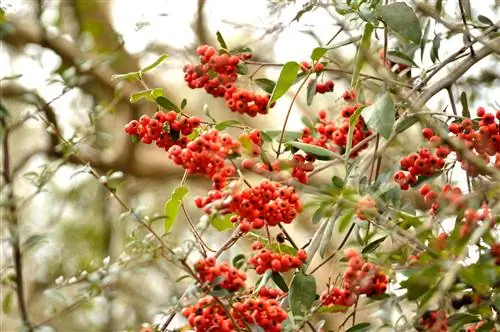- Author admin [email protected].
- Public 2023-12-16 16:46.
- Last modified 2025-01-23 11:22.
The delicate foliage, which is bathed in bright colors in autumn, makes the fire maple an attractive object for the art of bonsai design. This species can be shaped by cutting leaves, shoots and roots. Wire techniques are also possible.
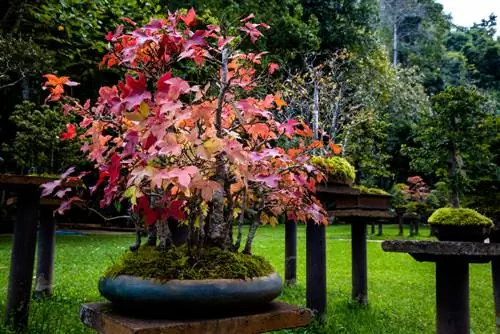
How do you care for a fire maple bonsai?
Fire maple bonsai is designed by cutting leaves, shoots and roots as well as wire techniques. Pruning is ideally done between January and February, while root pruning takes place in spring. Fire maples prefer a sunny outdoor location.
Sewing techniques
Fire maples prove to be tolerant of pruning because they sprout reliably within the next two to three weeks after more intensive intervention. Pruning is common between January and February when the tree has no sap and is still leafless. If necessary, you can prune the tree several times in a year until the beginning of August. This causes the bonsai to develop fine branches.
pruning
When cutting operations, the focus is on the position of the branches. Fresh shoots must not overlap. If thicker trunks are desired, shorten them to two to three pairs of leaves from a length of at least 20 centimeters. If you want to encourage the branch to branch, you should cut it back from ten centimeters to one or two pairs of leaves. Remove thicker specimens after the leaves have sprouted.
Root cutting
If you repot the bonsai in spring, as soon as the buds swell, the root ball is cut. In doing so, you reduce the root shoots by a third. Such interventions encourage fire maples to form new roots. In this way a root base can be formed.
Wiring
You should start with this design method as early as possible and ideally immediately after sprouting. The more the branches become woody, the greater the risk of breakage. If you proceed carefully, even one- to two-year-old specimens can be bent. Copper wires with a diameter of one millimeter or 1.5 millimeters thick aluminum wires are suitable.
Check regularly
Over the next four to six weeks, the wood will harden so you can remove the wire. All stabilizing wires should be unwound by the end of summer at the latest, as this is when intensive growth in thickness begins. Traces of dented bonsai wires can often be seen because the fire maple has a smooth bark. These structures grow over time.
Care instructions
The combination of nitrogen-rich fertilization and excessive irrigation ensures vegetative growth at an increased rate. As a result, the bonsai develops shoots with long distances between the individual nodes. This phenomenon is not a problem in the cultivation phase. In later life, you will need to keep the tree in a compact shape through regular pruning.
Tip
Nutrition is supplied every two weeks from leaf emergence to autumn color. Use liquid fertilizer or fertilizer cones. In spring you should water as little as possible.
Location
Fire maples are adapted to outdoor conditions, so a bonsai is not suitable for indoor cultivation. The tree prefers a place in the sun. On extremely hot days, it is grateful for shade during lunchtime. Airy places with windy conditions are optimal.

